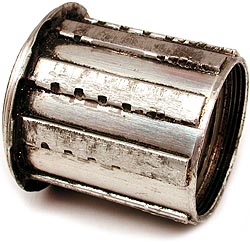I created a thread asking something a little bit more broad/vague but i have a specific question and request opinions versus my ignorant thoughts.
Im currently 270ish and I will be riding road for the majority of my rides with the hope to get on a little gravel just to get from one trail to another. Both wheelsets will be for disc version bikes.
Im thinking about picking up one of these two wheelsets:
1. HED Belgium Plus 32h with Chris King hubs. 3x lacing with double-butted spokes.
2. Velocity Dyad 36h with White Industries hubs. 3x lacing with double-butted spokes.
Im really trying to understand if there is a "large" difference between 32h vs 36 hole? I understand that 36h is heavier and better suited for my weight right now but in 6+ months... my weight will change and the 32h should be fine? While Im more of a fan of the HED Belgiums mainly because Im familiar with the name and they just look "better" to me... the Velocity Dyads might fit the gravel profile better in the long term use if I choose to take a ride in that direction.
From my understanding... a 40h is said to not produce much differences than the 36h in regards to 4x lacing or anything else but Im asking to confirm that current train of thought.
TIA
Im currently 270ish and I will be riding road for the majority of my rides with the hope to get on a little gravel just to get from one trail to another. Both wheelsets will be for disc version bikes.
Im thinking about picking up one of these two wheelsets:
1. HED Belgium Plus 32h with Chris King hubs. 3x lacing with double-butted spokes.
2. Velocity Dyad 36h with White Industries hubs. 3x lacing with double-butted spokes.
Im really trying to understand if there is a "large" difference between 32h vs 36 hole? I understand that 36h is heavier and better suited for my weight right now but in 6+ months... my weight will change and the 32h should be fine? While Im more of a fan of the HED Belgiums mainly because Im familiar with the name and they just look "better" to me... the Velocity Dyads might fit the gravel profile better in the long term use if I choose to take a ride in that direction.
From my understanding... a 40h is said to not produce much differences than the 36h in regards to 4x lacing or anything else but Im asking to confirm that current train of thought.
TIA








